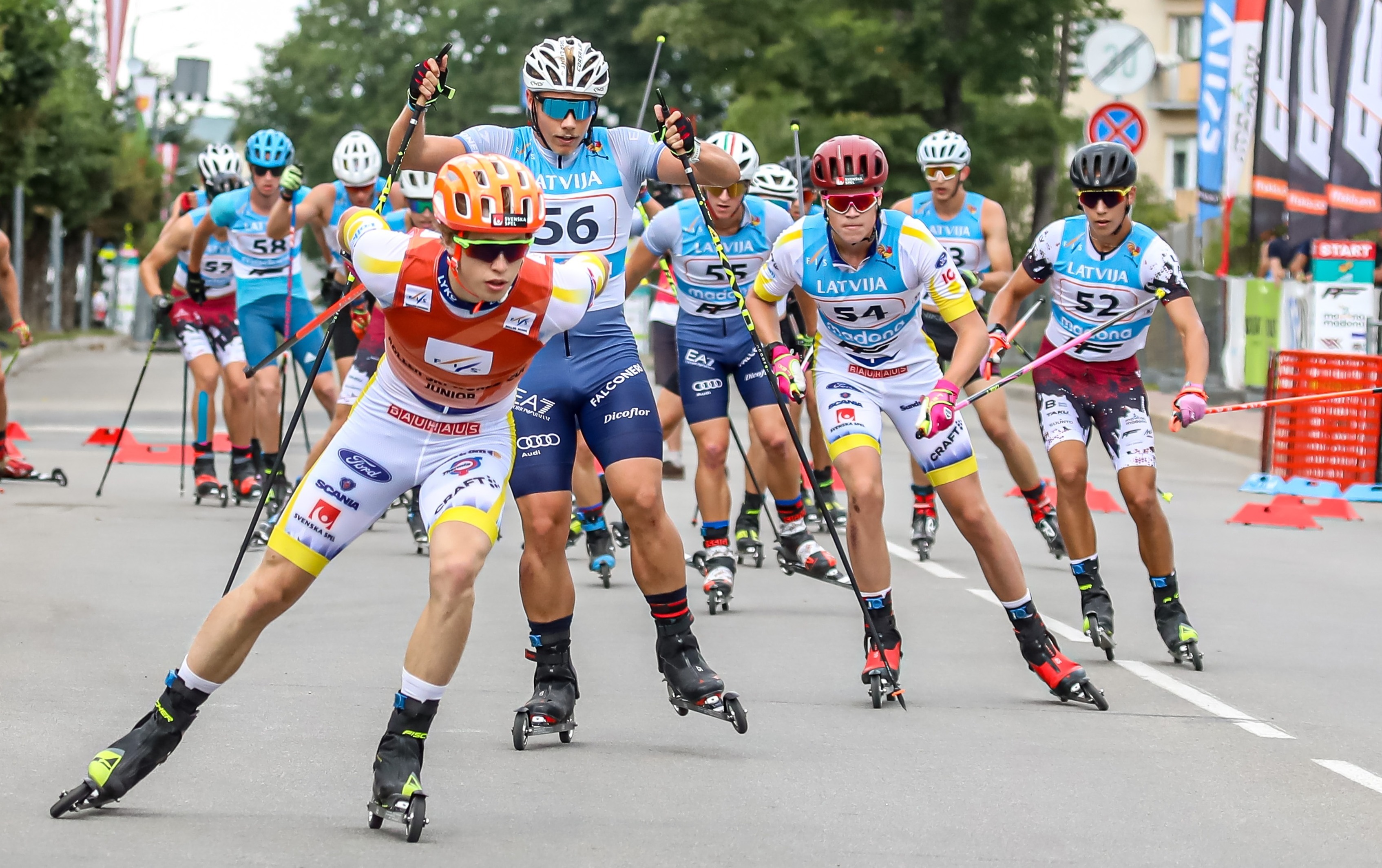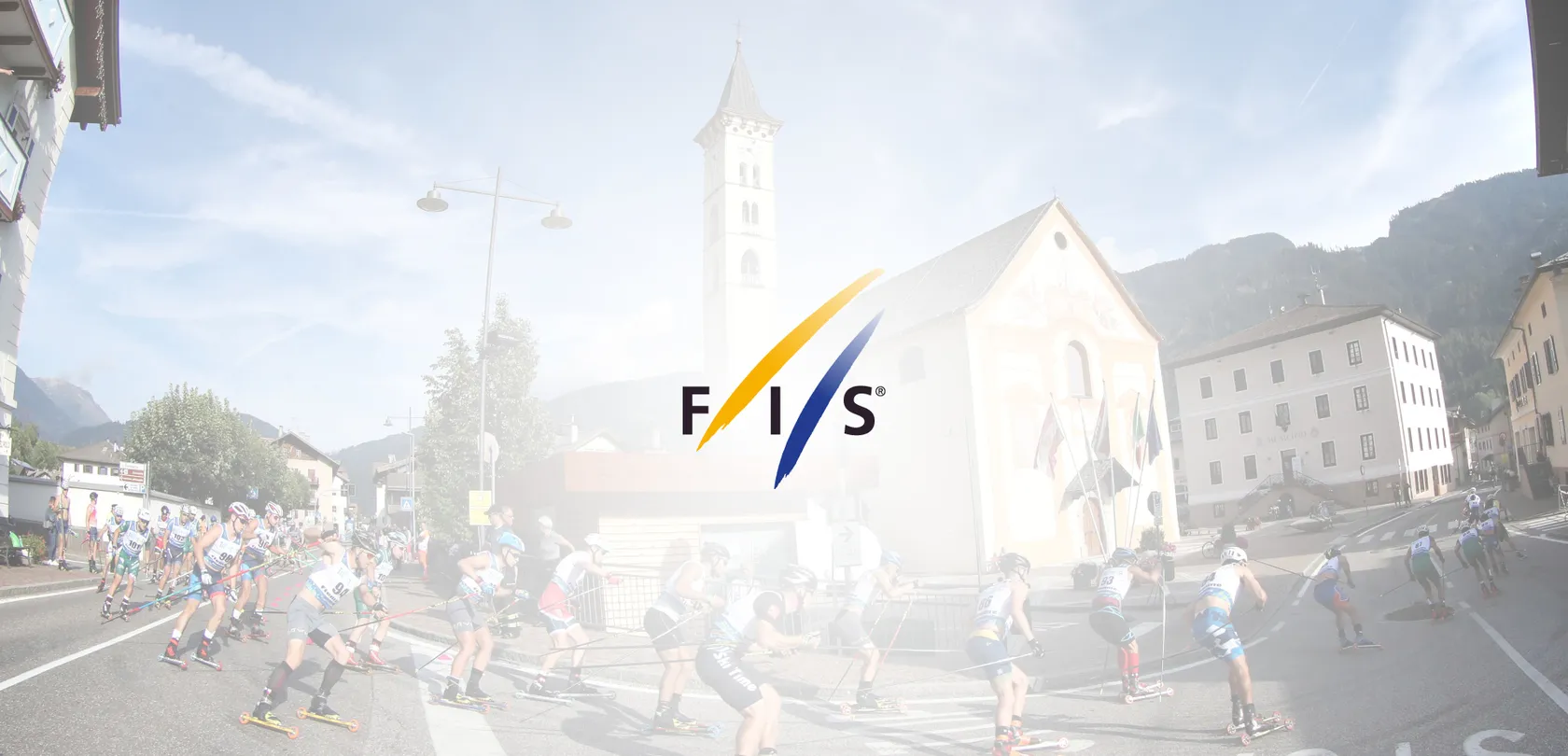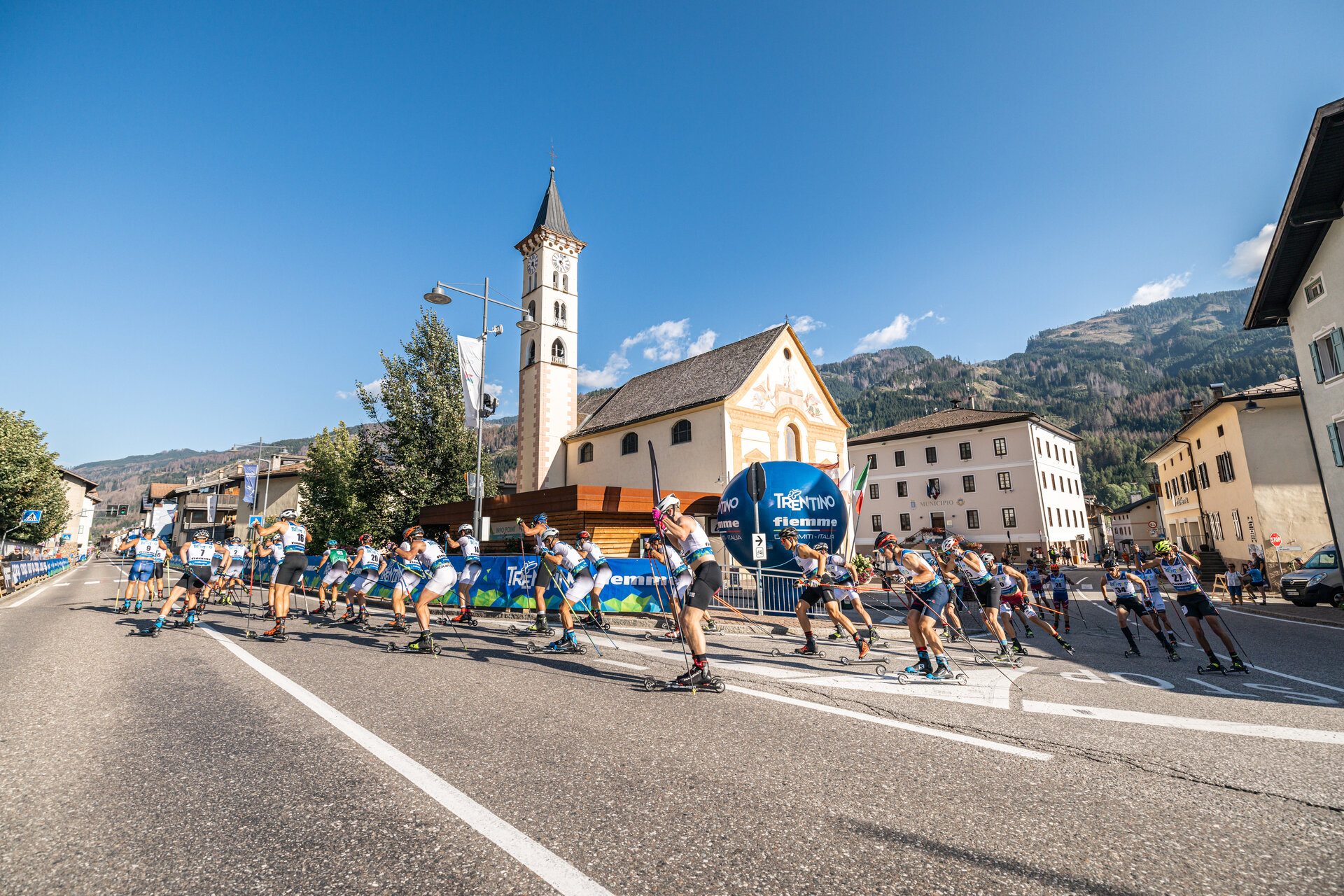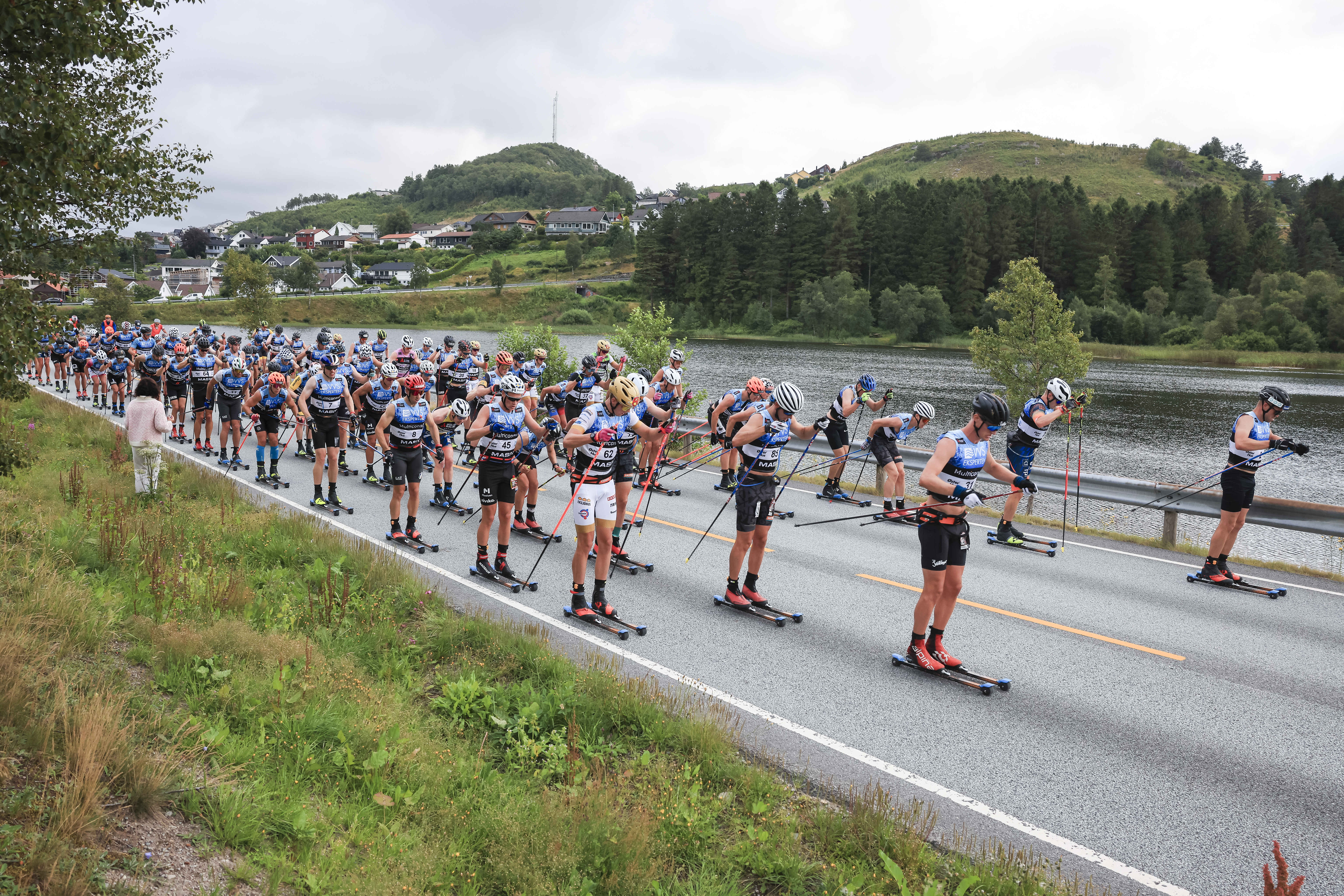
Everything you need to know about Roller Skiing
Originally published in FIS on July 18, 2025
The 2025/26 FIS Roller Ski World Cup season started in Madona (LAT) on July 17. Originally a recreational activity established in Italy in the 1930s, roller skiing became a summer training tool for cross-country skiers in the second half of the century.
The first competitions were held in the 1980s, and FIS recognized roller skiing as a distinct discipline from cross-country in 1992. World Cup events followed, and this year marks the 25th anniversary of the first World Championships held in Rotterdam.
Roller skis have a short, rigid frame—usually aluminum or carbon fiber—with two small rubber or polyurethane wheels. Because racing occurs on roads or hard surfaces, athletes typically wear helmets and gloves to prevent injury from falls.
“Roller Skiing is kind of mimicking Cross-Country Skiing, since it’s basically preparation for winter competition,” says FIS Roller Skiing Sub-Committee Chairman Mārtiņš Niklass. “There are two types of roller skis. Skating skis are usually shorter, while Classic roller skis are longer and heavier. For Classic, one wheel has a ratchet so you get kick grip similar to classic wax on snow.”
Almost all the big names in cross-country skiing have competed in the Roller Ski World Cup. “I’d say 99% of roller ski athletes compete in the winter,” Niklass adds. “Top cross-country athletes like Johannes Høsflot Klæbo and Frida Karlsson have raced Roller Ski World Cups or World Championships, though they focus more on winter.”
Race formats mirror winter cross-country (minus Pursuit) and include a Super Sprint over 160–200 meters.
Opportunities for smaller nations
Reigning overall World Cup champion Raimo Vigants (LAT) races his home event in Madona. He recalls tough beginnings but now targets Milano Cortina 2026, using strong summer results—especially mass-start skate races—to build toward winter.
Kazakhstan’s Anna Melnik, 3rd in the 2023 Roller Ski World Cup and 4th in 2024, also aims for Olympic qualification while targeting successes in Madona and Rome. She notes that roller skiing—an integral part of training in Kazakhstan—offers consistent glide regardless of waxing conditions and eases the transition to snow.
Unlike winter cross-country, where ski and waxing tech can be decisive, Roller Ski World Cup competitors use standardized skis (except in Super Sprint), leveling the field for athletes from nations without large service budgets. Vigants and Melnik say this parity increases competitiveness and motivation.
Formats and venues broaden appeal
Italy’s Emanuele Becchis specializes in Super Sprint. With a background in inline skating, he was drawn to the speed of fast wheels and short distances, which don’t exist on snow. Roller skiing’s urban flexibility allows races in iconic settings, and Becchis helped bring a Rome World Cup stage with a sprint in front of the Colosseum.
Vigants and Melnik welcome taking the sport into major cities, envisioning future stages in locations like Riga and praising the spectacle for fans.
The future of roller skiing
With climate change threatening winter venues and seasons, Niklass sees a future where roller skiing becomes part of the cross-country World Cup calendar, similar to indoor/outdoor splits in athletics. Popular summer events such as Blinkfestivalen (NOR), Martin Fourcade Nordic Festival (FRA), and Alliansloppet (SWE) already draw large crowds.
Sweden’s Linn Sömskar dominated recent seasons, collecting a 13th world title and a fourth overall World Cup crown before retiring to focus on physiotherapy; she may return for Alliansloppet, now on the World Cup calendar.
Roller skiing’s accessibility is a major advantage: as Becchis notes, “you just need asphalt.” After Madona, the 2025/26 World Cup visits Trollhättan (SWE), then Rome (ITA), with the finale at Val di Fiemme as part of the FIS Nordic Summer Festival from September 19–21.
See Also

Rome to host the third stage of the Rollerski World Cup
September 15, 2025 / FIS

Overview of the 2024 FIS Rollerski Season
July 12, 2024 / FIS

2024 FIS Rollerski Season Preview
July 12, 2024 / FIS

Excitement Builds for the FIS Rollerski World Championships in Val di Fiemme
September 11, 2024 / FIS

Excitement Grows as Rollerski Season Begins
October 15, 2023 / FIS
